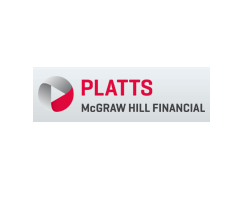SGX Coking Coal Swaps Trade Hits Record High on Price Volatility, Move to Indexation

By Edwin Yeo, Weng Yile and Elizabeth Low
November 7, 2017 - The coking coal market in Asia has witnessed significant events this year, such as physical coking coal pricing shifting towards indexation and spot prices surging past $300/mt FOB Australia in April due to Cyclone Debbie, which have led to the birth of a liquid derivatives market.
The spike in trade volumes of coking coal swaps on the Singapore Exchange reflects the growing appetite by a wide range of industry participants to protect themselves against volatility.
The traded volume of coking coal swaps on the SGX spiked to 12.8 million mt over January-October, more than double the combined volume of swaps traded on both the SGX and Chicago Mercantile Exchange in full-year 2016, data gathered by S&P Global Platts showed.
SGX's coking coal swaps, which settle against TSI's Australia Premium Hard Coking Coal FOB index, saw its traded volume for October surge 81 times year on year to 1.135 million mt and open interest for October spike 189 times to 1.177 million mt, according to SGX data.
TSI's PHCC FOB Index is a pricing unit under S&P Global Platts.
With swaps having transformed the iron ore market in recent years, coking coal buyers and sellers have long-awaited a similar risk mitigation tool.
The surge in the liquidity of coking coal swaps trades on the SGX is consistent with the increase in the number of participants across the globe -- including miners, traders, mills and financial associations -- in the coking coal derivatives market.
"The number of participants in the coking coal derivatives market has tripled since the start of the year, and more are joining every month," SGX Director for Oil, Gas and Power Cheong Jin Yu said late October.
The growth in the swaps trade helps "enhance price transparency and strengthen price formation in the spot market," he added.
Physical Coal Pricing Shifts to Indexation, Boosts Swaps Trade
The shift towards indexation in the northeast Asian market, where prices were previously based on an agreed fixed price once a quarter from 2010 to Q2 2017, was understood to be the driver for this year's active paper market, sources said.
"The paper market has seen both an increase in volume and in global participation, which may be due to opportunities provided by market price volatility and further acceptance of the index pricing mechanism globally," a BHP spokesperson said.
With the market getting used to indexation, several steelmakers in the Asia Pacific region have told Platts that they intend to make derivatives trading a part of their strategy. One particular company was ready to participate, but a source at the company said they were simply waiting for swaps trade volumes to grow a little more.
"The physical market is small with few market participants, but with the addition of the paper market, it has helped improve the overall liquidity of the market," said Vincent Liu, director at Exen Resources, one of the top coking coal trading companies in the world by volume.
Indian metallurgical coke producer Saurashtra Fuels' Director Dipak Agarwalla said: [Hedging] is a good thing, especially when you've a view on the market. It makes a lot of sense. It also helps to lock in profit."
Price Volatility
The growth in the swaps market also came amid coal price volatility this year, as market participants sought to protect themselves against the volatility.
Cyclone Debbie which hit Queensland, Australia, the heart of coking coal supply late March, triggered a 109% spike in spot prices in two weeks to a record high of $314/mt FOB Australia on April 17, according to TSI's PHCC FOB data.
For steelmakers, the paper market helped to "address the fluctuations in the coking coal market in the last 1.5 years," said Arun Maheshwari, executive vice president of commercial at India's private steelmaker JSW. Risk mitigation tools such as swaps can "bring certainty to the [steel] business," he said.
"The physical market is small with few market participants, but with the addition of paper market, it has helped improve the overall liquidity of the market," said Vincent Liu, director at Exen Resources, one of the top met coal trading companies in the world by volume.
Trade Volumes to Rise Further
Many market participants expect coking coal swaps volumes traded on the SGX to rise further.
"The coking coal [swaps] market has grown even faster than iron ore relative to the underlying physical market size, with monthly volumes over a million tons since February. We expect this robust growth of volumes to continue as we continue to engage the market and build the community," SGX's Cheong said.
"We expect this [swaps] market to grow significantly in the coming years as industry participants potentially use this tool to effectively manage their price risk," the BHP spokesperson said.
Coking coal swaps were launched on SGX in July 2014 due to growing interest in steel raw materials derivatives. This was followed by the coking coal option contracts launched in September to enhance the suite available to investors.

